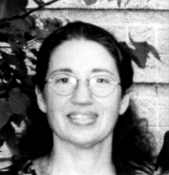 |
| Lynne G. Maxwell, MD, FAAP
|
|
Welcome
I am delighted to welcome all our colleagues and their families to Pediatric
Anesthesiology 2004, the ninth annual joint Winter Meeting of the Society for Pediatric Anesthesia and the Section on Anesthesiology and Pain Medicine of the American Academy of Pediatrics. This year's program will take place March 4-7, 2004 at the Pointe Hilton at Squaw Peak Resort and Spa, in Phoenix, AZ. The resort offers wonderful space to accommodate all our activities: learning, socializing, exercising, relaxing. You will find an exciting blend of the scientific and the practical, research and clinical aspects of pediatric anesthesiology.
The meeting will present speakers who are experts in the fields of anesthesiology, pain management, pediatrics, patient safety, and medicolegal issues.
Planned topics include:
- Patient Safety - Minimizing errors and what to do when bad things happen: This session will cover strategies for process improvement and decreasing errors; clinical scenarios of adverse events; and strategies for managing after bad outcomes; personal, professional, and legal.
- Anesthesia and Pediatric Diseases - Implications of complex medical conditions for anesthetic management
- Will Anesthesia Make My Child Stupid, Doc? - Current controversies about central nervous system effects of anesthetic agents: neuroprotective or neurotoxic.
- Anesthesia in International Medical Services - A panel of experts in the field will discuss current issues of international medical training and practice: triumphs and traumas.
- Pediatric Perioperative Environment - What is performance based credentialling? Should there be standards for hospitals/practitioners who provide perioperative care for children: perspectives from academic and community practices.
- AAP Advocacy Lecture and Awards
- Oral and Poster Abstract Presentations: Expert moderated poster discussions include topics of clinical research, practical techniques and basic science investigation. Opportunities to discuss techniques and investigation with authors and experts abound, both at the formal sessions and during breaks and social hours.
- The Always Popular Jeopardy Panel, now moved to an earlier time in the meeting by popular demand.
Workshops complement the plenary sessions and include extensive exposure to:
- Airway Management - Hands on opportunities include lightwand, laryngeal mask airway, fiberoptic, and alternative techniques for managing both normal and difficult pediatric airways
- Pain Management - Epidural and nerve block techniques for the full range of surgery done in children
- Thoracic surgery - Includes techniques for lung isolation and anesthetic management
- New Modes of Ventilation/New Anesthesia Machines - What equipment is appropriate for our sickest/smallest patients
- Designing Clinical Trials - Practical information for single and multicenter trials: bring your ideas!
- FOR FELLOWS ONLY - Three hour workshop covering topics including: research skills, how to write a grant proposal, trial design and academic career development
And this year for the first time: a full day AHA approved PALS course for a limited number of meeting registrants.
The program will be rounded out with refresher courses covering basic issues in pediatric anesthesiology, and problem-based learning discussions (PBLD) for case discussion with experts in a small-group format. The meeting will continue to employ the popular real-time computerized audience response polling system to survey audience composition and practice patterns.
This meeting would not take place without the collaborative efforts of many, including the SPA Committee on Education, the Executive Committee of the AAP Section on Anesthesiology and Pain Medicine. Thanks to them and many others, attendance at Pediatric Anesthesiology 2004 will offer manifold opportunities for learning, debate, and fun for all.
Lynne G. Maxwell, MD, FAAP
Winter Meeting Program Chair
|
